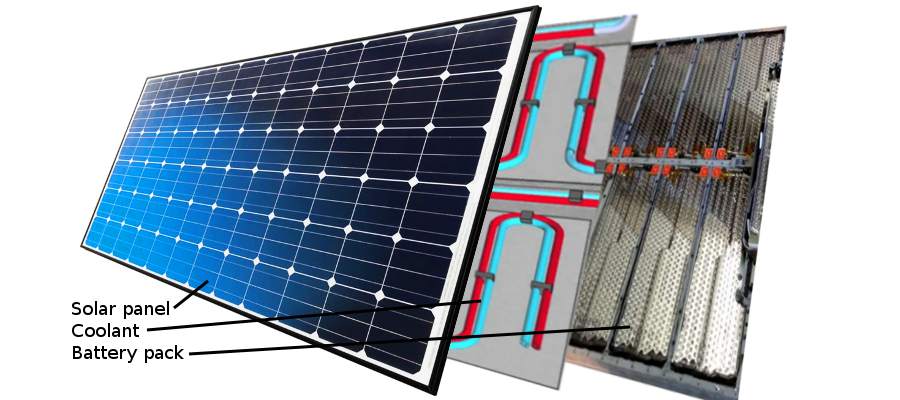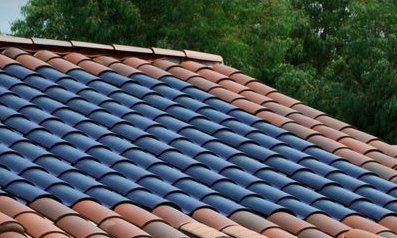What if we should read the master plan literally?
"Create stunning solar roofs with seamlessly integrated battery storage"

Imagine this: a solar panel with batteries attached to the back of it. Thus it can "provide power" even after sunset!
Between the solar panel and the batteries coolant fluid is circulated cooling both the panel and the batteries.
As a "byproduct" you also get warm water. To be used in the house.
Both solar panels and batteries loose efficiency when they become hot. One thing Tesla is really-really good at is cooling batteries.
By having the roof actively cooled the house beneath it doesn't get as hot any more. Less power is needed to cool it down with AC. In the winter you can now and then circulate hot water in the pipes melting the snow on the panels (just the bottom layer so the rest slides down in an avalanche).
Perhaps this is why Elon Musk wants to combine both companies? Everyone is talking about packaging solar panels and battery storage in one combined package people will buy - but what if they really want to create "solar roofs with seamlessly integrated battery storage"? That product would be hard(er) to make by two separate companies.
"Create stunning solar roofs with seamlessly integrated battery storage"

Imagine this: a solar panel with batteries attached to the back of it. Thus it can "provide power" even after sunset!
Between the solar panel and the batteries coolant fluid is circulated cooling both the panel and the batteries.
As a "byproduct" you also get warm water. To be used in the house.
Both solar panels and batteries loose efficiency when they become hot. One thing Tesla is really-really good at is cooling batteries.
By having the roof actively cooled the house beneath it doesn't get as hot any more. Less power is needed to cool it down with AC. In the winter you can now and then circulate hot water in the pipes melting the snow on the panels (just the bottom layer so the rest slides down in an avalanche).
Perhaps this is why Elon Musk wants to combine both companies? Everyone is talking about packaging solar panels and battery storage in one combined package people will buy - but what if they really want to create "solar roofs with seamlessly integrated battery storage"? That product would be hard(er) to make by two separate companies.





